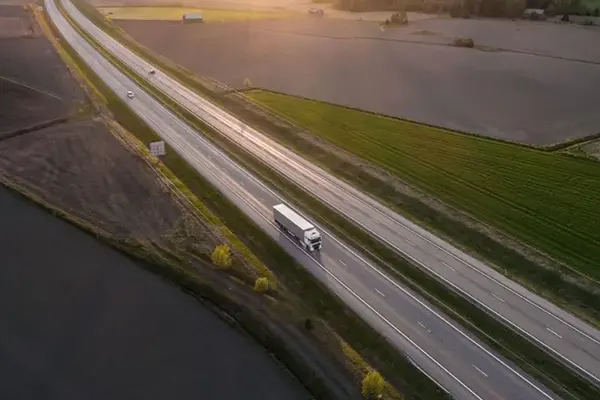
The Road Less Traveled: Unique Challenges and Rewards of Rural vs. Urban Truck Driving
In the trucking world, the experience behind the wheel can vary dramatically between the open roads of the countryside and the busy streets of the city. At SAGE Truck Driving Schools, we understand these differences are more than just scenery changes. They shape the daily life and skills of a truck driver.
In this article, we delve into the unique challenges and rewards of rural versus urban truck driving. Whether you’re a potential driver eager to start your journey or a seasoned pro considering a switch in your route, this article sheds light on what to expect in both environments. With SAGE’s expert training and insights, we’ll help you navigate these distinct paths, equipping you with the knowledge to tackle each one confidently.
Navigating the Rural Routes
When it comes to truck driving, rural routes present a set of challenges and rewards quite different from their urban counterparts. Let’s take a closer look at what driving through the countryside entails and how SAGE Truck Driving Schools prepare drivers for these unique conditions.
Challenges in Rural Truck Driving
- Remote Locations: Often, rural routes mean driving through isolated areas. This can pose challenges in terms of limited access to repair shops, rest areas, and medical facilities in case of emergencies.
- Harsh Weather Conditions: Rural roads can be more susceptible to extreme weather conditions like snow, ice, or heavy rain, requiring drivers to have advanced skills in handling their vehicle safely under these circumstances.
Rewards of Rural Routes
- Scenic Beauty: One of the most significant rewards of rural truck driving is the scenic landscapes. The tranquility and beauty of the countryside can be a calming and enjoyable aspect of the job.
- Strong Community Connections: Delivering to smaller communities often allows drivers to build relationships and a sense of connection, contributing to job satisfaction.
SAGE’s training programs focus on equipping drivers with the skills needed to navigate these rural challenges confidently. From mastering vehicle control in adverse weather conditions to understanding the importance of route planning in remote areas, SAGE prepares its students for the full spectrum of rural driving experiences.
The Urban Driving Experience
Urban truck driving stands in stark contrast to its rural counterpart, presenting a unique set of challenges and rewards. Here’s what truck drivers can expect when navigating the busy and often chaotic city streets, and how SAGE Truck Driving Schools equips them for these specific environments.
Urban Truck Driving Challenges
- Navigating Heavy Traffic: One of the most significant challenges in urban areas is dealing with dense traffic. It requires drivers to have excellent control over their vehicles and a high level of alertness.
- Strict Delivery Schedules: Urban deliveries often come with tighter schedules. This demands efficient time management skills to navigate through busy streets while adhering to delivery timelines.
- Limited Space for Maneuvering: Unlike the open roads of rural areas, urban settings pose challenges with narrow lanes and restricted parking spaces, requiring precise driving and parking skills.
Rewards in the City
- Excitement and Diversity: Urban truck driving can be exciting, with diverse people to meet and different locations to see every day. It keeps the job interesting and varied.
- Access to Amenities: Unlike rural routes, urban driving means you’re never too far from amenities like restaurants, truck stops, and repair services.
SAGE’s comprehensive training programs include urban driving techniques, focusing on skills like precision maneuvering, time management, and navigating through heavy traffic. This training ensures that SAGE graduates are well-prepared for the bustling environment of city trucking.
Skills and Adaptability: The Truck Driver’s Toolbox
Whether navigating the serenity of rural landscapes or the hustle of urban streets, truck drivers need a robust set of skills to adapt to these varying environments. SAGE Truck Driving Schools emphasizes the development of these competencies, ensuring drivers are well-equipped for any route. Let’s explore some of these key skills.
Essential Skills for Truck Drivers
- Advanced Navigation Skills: Understanding how to read maps and use GPS systems effectively is important, especially when detours or unexpected road conditions arise.
- Time Management: Balancing punctuality with safety is essential, whether meeting tight urban delivery schedules or managing longer rural routes.
- Safety Precautions: Adhering to safety protocols is vital in every setting, from maintaining vehicle control in rural weather conditions to defensive driving in urban traffic.
Adapting to Different Scenarios
- Calmness Under Pressure: Handling the stress of unexpected delays or traffic requires a level-headed approach.
- Problem-Solving Abilities: Being able to think on your feet and make quick decisions is essential for overcoming the challenges of both rural and urban driving.
SAGE’s training programs focus on these areas, preparing drivers to be versatile and resilient. This adaptability is what sets SAGE-trained drivers apart in the trucking industry.
Industry Perspectives: Adapting to Changing Landscapes
The trucking industry is not static; it’s continually evolving with new technologies, regulations, and societal needs. Truck drivers, especially those trained at institutions like SAGE Truck Driving Schools, must adapt to these changes to remain efficient and compliant. Let’s delve into how truck drivers can stay ahead in this dynamic industry.
Keeping Up with Technological Advancements
- Embracing New Technologies: From advanced GPS systems to electronic logging devices (ELDs), you’ll need to stay current with technology for efficiency and regulatory compliance.
- Utilizing Digital Tools: Leveraging apps and online resources for route planning, weather updates, and communication enhances a driver’s ability to navigate effectively in any environment.
Staying Informed on Regulations
- Understanding Legal Changes: Keeping abreast of changes in driving laws and industry regulations is key to avoiding penalties and ensuring safe operations.
- Continual Learning: Ongoing education, whether through formal training or self-study, helps drivers adapt to industry changes and maintain a competitive edge.
SAGE ensures that its trainees are not only prepared for today’s trucking environment but also equipped with the mindset and resources to adapt to future industry shifts. This forward-thinking approach is essential for a successful, long-term career in truck driving.
Steering Towards Success: Concluding Thoughts on Diverse Truck Driving Experiences
As we reach the end of our journey exploring the contrasting worlds of rural and urban truck driving, it’s clear that each path offers its unique set of challenges and rewards. Whether it’s the peacefulness of rural routes or the bustling activity of city driving, a career in trucking is filled with diverse experiences. SAGE Truck Driving Schools play a pivotal role in preparing drivers for these varied environments, ensuring they are equipped with the necessary skills and adaptability to thrive.
Key Takeaways
- Diverse Skill Development: SAGE’s training programs emphasize the importance of versatile skills, from precise maneuvering in tight urban spaces to navigating remote rural roads.
- Adaptability is Key: The ability to adapt to different driving conditions and environments is a hallmark of a successful truck driver, as taught in SAGE’s comprehensive courses.
A Rewarding Career Path
- Truck driving is not just a job; it’s a journey filled with learning and growth opportunities. Whether in rural or urban settings, the experiences and skills gained pave the way for a fulfilling career.
- The training and insights provided by SAGE equip drivers to face these challenges head-on, making them well-prepared for wherever the road may lead them.
For those interested in pursuing a career in truck driving or looking to enhance their skills in this dynamic field, SAGE Truck Driving Schools offers the guidance and training needed to succeed. With their expert-led programs, you can navigate the roads, whether rural or urban, with confidence and competence.
What are the typical hours or shifts like for rural versus urban truck drivers?
- Rural Truck Drivers: Drivers on rural routes may experience longer continuous driving periods due to the distance between locations. Their schedules can involve irregular hours, including night driving, to meet delivery deadlines. They often have to manage longer hauls with fewer stops.
- Urban Truck Drivers: Urban drivers usually face shorter but more frequent trips within city limits. They may have more regular hours compared to rural drivers, often aligned with business hours to accommodate delivery and pickup times. Urban driving might involve navigating during peak traffic times, requiring shifts that start early in the morning or late at night to avoid congestion.
How does the compensation compare between rural and urban truck driving?
The pay for truck drivers can vary based on several factors including the type of cargo, company, experience, and the specific challenges of the route. Generally, rural truck drivers might be paid more per mile due to the longer distances covered and the potential for fewer overall stops. However, urban truck drivers might receive compensation that reflects the high-stress environment of navigating busy city streets and tighter delivery schedules. Bonuses for on-time deliveries and extra pay for handling hazardous materials or oversized loads could also influence earnings in both settings.
What specific technologies are taught at SAGE for managing advanced GPS systems and electronic logging devices?
While the specific curriculum details were not mentioned in the article, truck driving schools like SAGE typically teach the use of advanced GPS systems to help drivers with route planning, real-time traffic updates, and efficient navigation. Electronic Logging Devices (ELDs) are standard in the industry for tracking hours of service, ensuring drivers comply with legal driving limits. Training would include how to operate these devices, log hours correctly, and troubleshoot common issues. This ensures drivers are proficient in using technology that enhances safety and efficiency on the road.
To learn more about the programs and opportunities at SAGE, visit SAGE Truck Driving Schools and discover how you can start your journey in the trucking industry today.
Disclaimer: The information in this article is based on the data available as of its writing and is meant to inform and guide prospective CDL trainees. For the most current information and specifics about CDL training programs, please contact SAGE Truck Driving Schools directly.
Please fill out the information below and our team will reach out to chat about your options.


